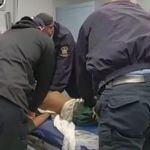Wrote that the patient’s mutations were absent from bird samples, suggesting that the alterations occurred in the patient following infection and aren’t affecting wildlife.
That’s “good news,” she added, as “it suggests ‘human-adapted’ viruses aren’t emerging in birds and reduces risk of transmission to another person.”
Rasmussen said that despite the increase in human cases, “the H5N1 situation remains grim.”
“There’s only so much we can predict from these sequence data, and we don’t know what combination of mutations would lead to a pandemic.
H5N1 virus,” she said. “However, the likelihood of a pandemic virus emerging increases with the number of infected humans.



